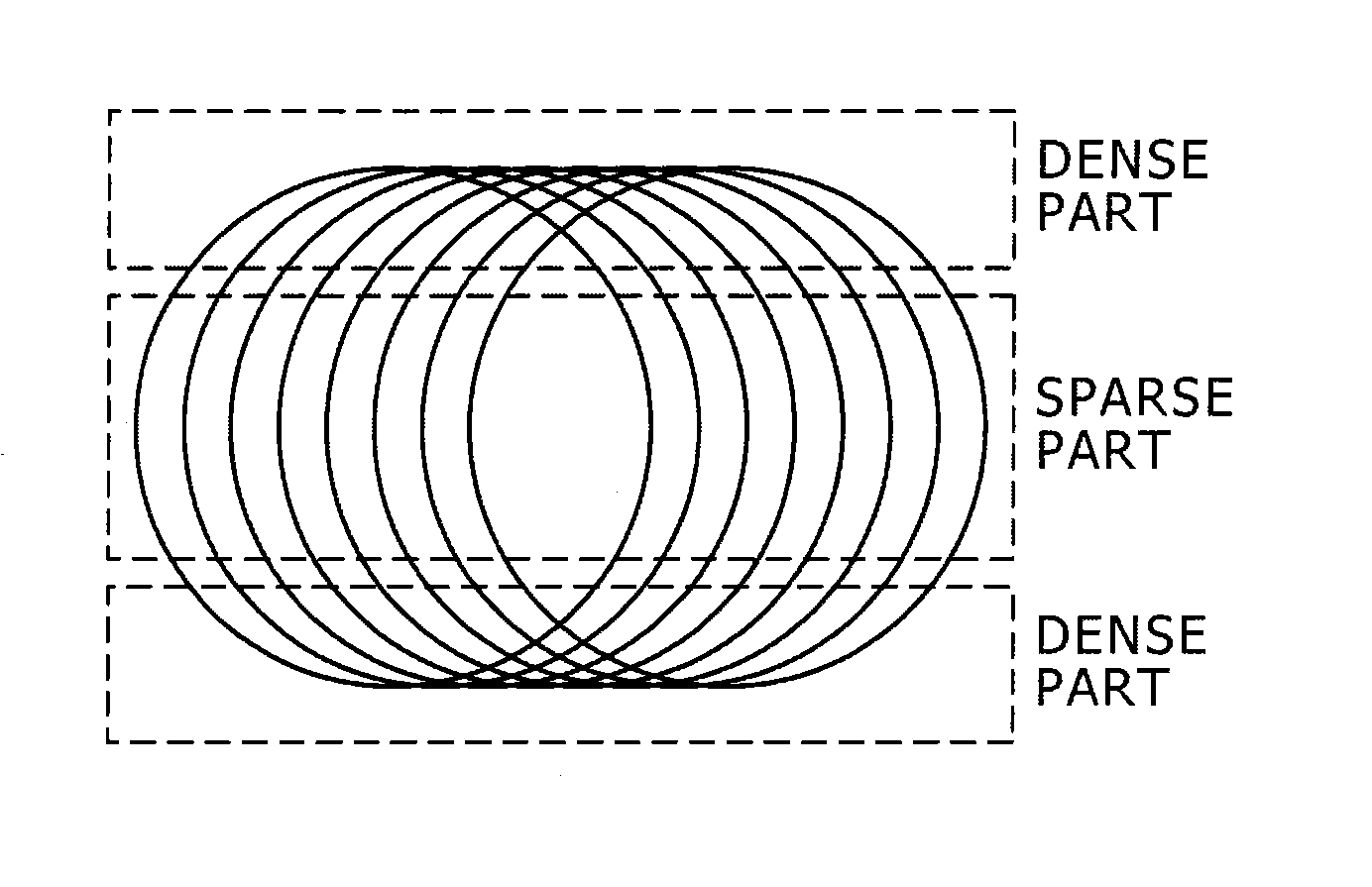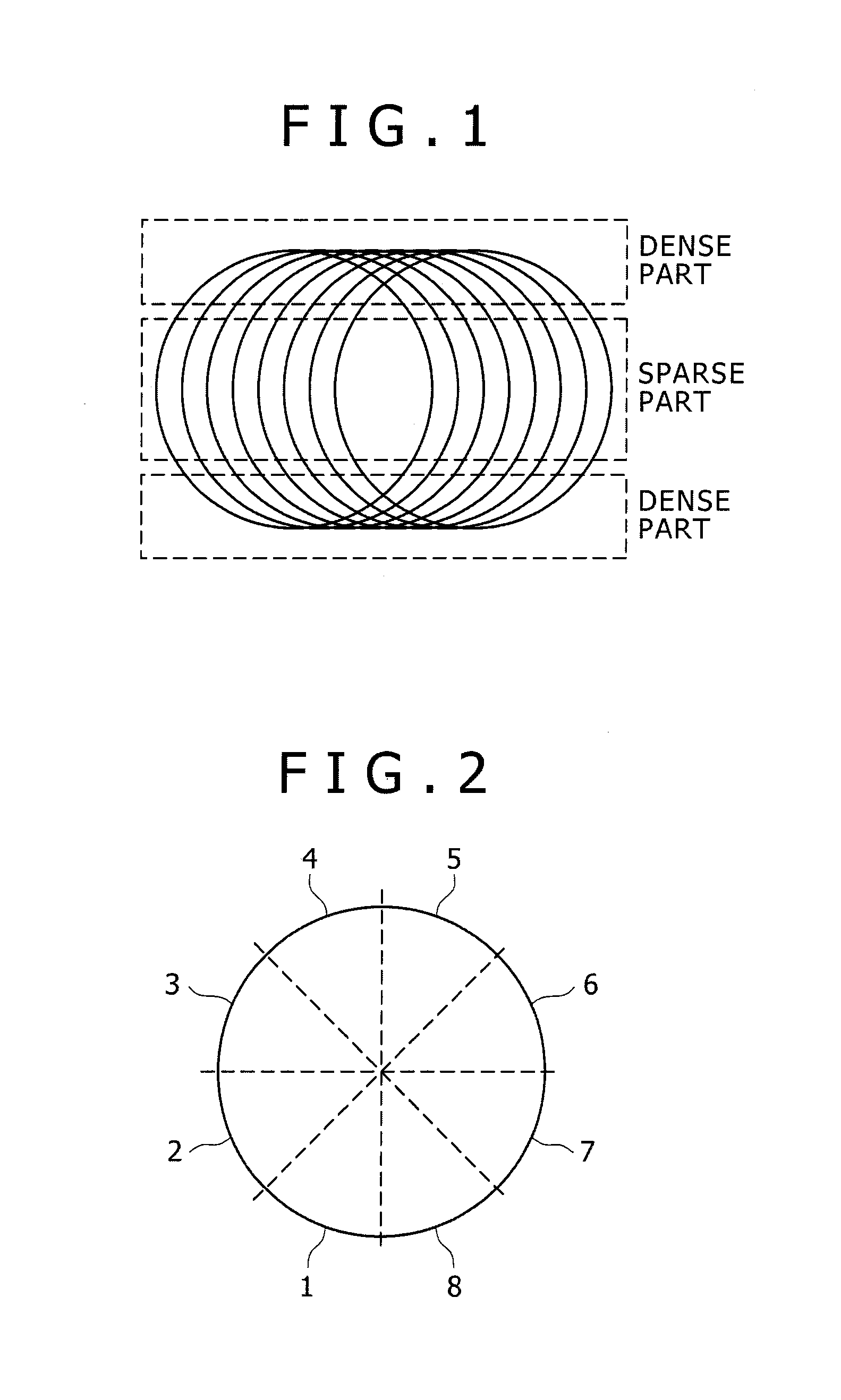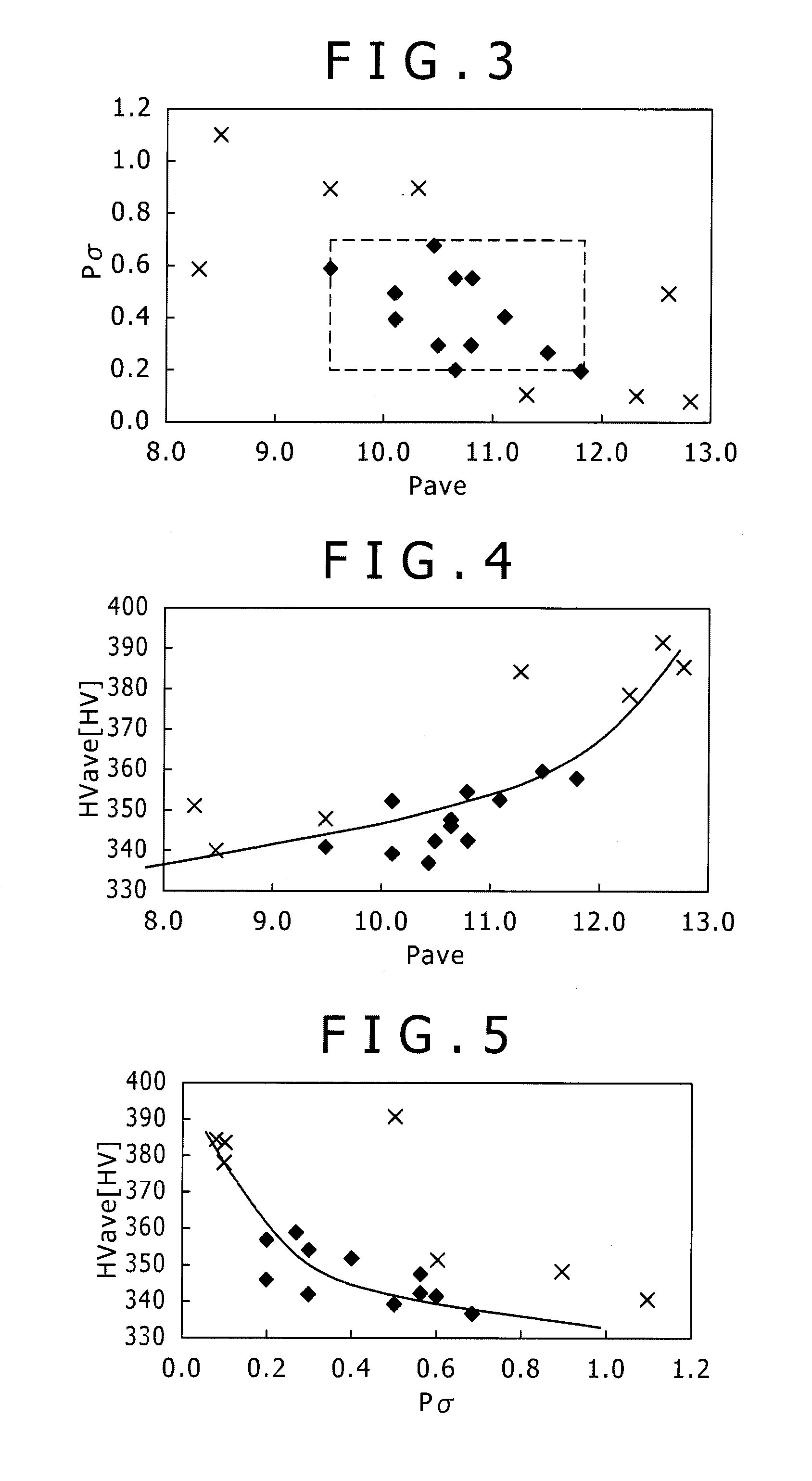Steel wire rod for high-strength spring excellent in wire drawability, manufacturing method therefor, and high-strength spring
- Summary
- Abstract
- Description
- Claims
- Application Information
AI Technical Summary
Benefits of technology
Problems solved by technology
Method used
Image
Examples
experimental example 1
[0066]Steel ingots having chemical compositions given in following Table 1 were made in a converter and then bloomed into steel billets having a cross section of 155 mm by 155 mm. The steel billets were heated to 1000° C. and worked (hot-rolled) into round wires having a wire size of 5.5 to 8.0 mm in diameter. Ideal critical diameters DI are also indicated in Table 1, each of which was measured on a specimen cut from a sample steel billet by measuring and plotting a Jominy curve according to the method prescribed in Japanese Industrial Standard (JIS) G0561 and determining the ideal critical diameter DI according to following Expression (4) prescribed in American Society for Testing and Materials (ASTM) Standard A 255-02. The ideal critical diameters DI are indicated as referential values in the case of steels (e.g., Steels E and G) having chemical compositions out of the applicable range of the ASTM standard:
22.974+6.214[C]+356.364[C]2−1091.488[C]3+1464.88[C]4−750.441[C]5 (4)
wherei...
experimental example 2
[0087]The coils of Test Nos. 1 to 12 obtained in Experimental Example 1 were subjected sequentially to the SV process, annealing as mentioned below, and wire drawing, and wire drawabilities (critical reduction of area in wire drawing and break frequency) of them were evaluated as Test Nos. 22 to 33.
[0088]Specifically, the coils were subjected sequentially to the SV process and annealing (softening anneal, at 700° C. to 900° C. for 1 to 2 hours), and drawn into 2-ton coils, and the critical reductions of area in wire drawing (upper limits of reduction of area at which a break occurs) of them were determined. Independently, five 2-ton coils for each of Test Nos. 22 to 33 were subjected sequentially to the surface-shaving (SV) process, the annealing, and wire drawing to diameters of 4.5 to 2.5 mm, and numbers of breaks occurred upon the wire drawing (break frequency) were measured. The evaluation results are indicated in Table 4 below.
TABLE 4Heat treatmentCritical reductionBreak freque...
PUM
| Property | Measurement | Unit |
|---|---|---|
| Temperature | aaaaa | aaaaa |
| Temperature | aaaaa | aaaaa |
| Temperature | aaaaa | aaaaa |
Abstract
Description
Claims
Application Information
 Login to View More
Login to View More - R&D
- Intellectual Property
- Life Sciences
- Materials
- Tech Scout
- Unparalleled Data Quality
- Higher Quality Content
- 60% Fewer Hallucinations
Browse by: Latest US Patents, China's latest patents, Technical Efficacy Thesaurus, Application Domain, Technology Topic, Popular Technical Reports.
© 2025 PatSnap. All rights reserved.Legal|Privacy policy|Modern Slavery Act Transparency Statement|Sitemap|About US| Contact US: help@patsnap.com



